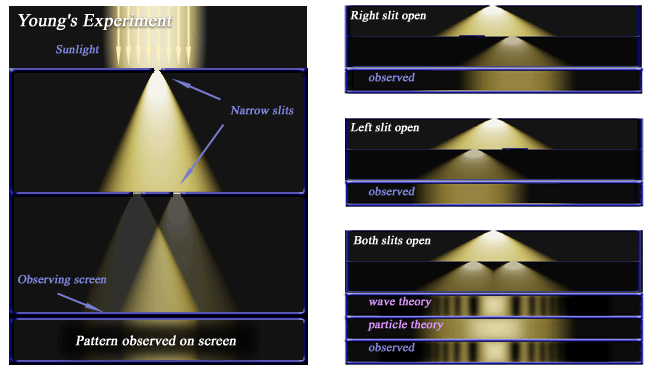Wave-Particle Duality
Light is complicated as it can act as both a wave and a particle. Choosing how we want to talk about light - wave or particle - is only a matter of convenience.
In the 19th century, experiments showed that light behaved as a wave. But in some cases, this wave nature did not make sense. The light had some properties that could only be explained if it was made of particles, like little "grains"; of light. A particle of light is known as a photon. These can be thought of as little packets of light, carrying energy.
To understand what happens to light when it reaches a mirror, we can say that photons bounce off the surface of the mirror. This treats the light as a particle like a ping-pong ball bouncing back. If we pass light through 2 holes then at the other side of the holes we see it interact like waves on the surface of a pond.
When we take a photograph on a modern camera, or on a telescope camera, we count these photons. The more we count the brighter an object is - we call this measurement the flux.
When light acts as a wave, it still carries energy, but it has a bunch of other information too. Like the wavelength and frequency. Light waves, or electromagnetic waves can have a huge range of wavelengths. Some are many kilometres long and some less than a thousandth of a billionth of a metre!

if it were made of particles or waves. In this experiment, it acts as a wave.
Credit: Joonasl Wikipedia

